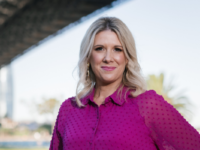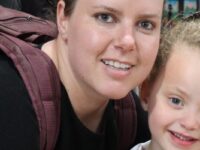The award-winning Lord of the Trees is using drone technology to replant deforested areas and help tackle the climate crisis.
Aymeric Maudous moved to Australia in 2004 on the back of an international career as a brand marketer for Renault, Disney and Louis Vuitton. One of the first places he visited on arrival here was the Royal Botanic Gardens in Sydney, where, he says, “in the shade of a majestic tree, I felt that I had arrived ‘home’.”
The same year, Aymeric worked on a forestry project in Western Australia, which subsequently became an integral part of the evolution of the business Aymeric founded, Lord of the Trees. The project involved the rehabilitation of salt-degraded land into what is now an 18-year-old healthy forest. The project firmly ignited Aymeric’s passion for environmental sustainability and has subsequently been awarded the United Nations World Environment Day Award within the Meeting The Greenhouse Challenge category.
In 2009, he launched Australia’s first EcoXpo in Melbourne, Sydney and Perth, to showcase how easy and achievable sustainable living can be for consumers and businesses alike. The expo ran for six years before Aymeric sold the business and, after a brief foray into the world of property management, he founded Lord of the Trees at the end of 2019.
Climate crisis is real
“The world is in the midst of an undeniable climate crisis,” Aymeric says. “In 2017, for example, the equivalent of 40 football fields were cleared or burnt every minute of every day to produce timber or make way for soy and palm oil crops and cattle pasture. Late last year and into 2020, Australia lost 21 per cent of our forests through bushfire.
“Lord of the Trees is helping accelerate reforestation efforts and achieve planting on a mass scale.”
“Trees are an invaluable part of our very existence: they provide oxygen we breathe, draw down carbon dioxide from the atmosphere, provide food, shelter, clean water and regulate our weather patterns,” Aymeric says. “It’s estimated that 22 trees are needed to meet the demand of one person per day.”
This knowledge was the key driver behind the business, on the back of watching a documentary by Sir David Attenborough on the transformation of the Galapagos Islands from a barren volcanic landscape into one of lush vegetation through wind-borne seeds.
“That was my moment,” Aymeric explains. “Emulate Mother Nature herself, through drone technology, science and environmental expertise to create the equivalent method of effective natural seeding.”
Reforestation key to countering the crisis
Lord of the Trees is developing autonomous pre-programmed drones that work day and night to replant deforested areas around the world. Working with the mining sector, local governments, the agricultural industry and landowners, the organisation is helping accelerate reforestation efforts and achieve planting on a mass scale at a significantly reduced cost.
Planting seedlings offers instant visual gratification, but seedlings have a failure rate of 60–70 per cent and producing seedlings for plantation is costly in terms of labour, energy and transportation.
Lord of the Trees, therefore, has adopted a direct seeding model.
“While this takes patience in waiting for seeds to germinate and then grow, this method creates a root system that is 70 per cent stronger than when planting seedlings,” Aymeric explains. “And the failure rate of seeding is only around 15 per cent – up to 50 per cent lower compared to using seedlings.”
The use of drones enables Lord of the Trees to plant five hectares of seeds per hour, whereas manual methods only cover one hectare in the same period of time.
“One of our drones can plant 160,000 seed pods in a day compared to only 800 seedlings planted by hand,” Aymeric says. “We rely on artificial intelligence to pre-program the drones so they can work day and night. They are able to shoot two seed pods per second. We just need two each day to swap batteries and reload seed pods into the drone.”
Teamwork is key
The business has been able to hit the ground running due to the strength of the people who’ve come on board. Aymeric combed the globe to find people with the passion and skill sets to carry out his regenerative mission.
Flight operations manager Mahmood Hussein is a CASA (Civil Aviation Safety Authority) approved drone pilot whose experience and expertise are also trusted by the likes of BHP, Fortescue, Regis Resources and KPMG. Dr Alex Sava, chief scientist of research and development, has over 40 years’ experience in microbiology, chemistry biochemistry and built environments. In 1986, when based in Kiev – just 90 kilometres from the site of the Chernobyl nuclear disaster – Dr Sava worked closely with the Institute of Nuclear Research of the Ukrainian Academy of Sciences, helping to assay everything from foods, soils and plants to air samples and baby pram surfaces, for traces of radiation and chemical contaminants.
Monica Dodi brings a CV that includes launching Warner Bros television channels and AOL’s entertainment channels worldwide, and looks after digital media and consumer products for Lord of the Trees. “As a board director of the Los Angeles River Revitalization Project, Monica is perfectly positioned to assist Lord of the Trees establish and maintain key relationships across our Trust and Foundation partners,” Aymeric says.
The team also comprises chief pilot Andrew Vukosav, a sought-after commercial and fine art photographer with a passion for flight and the Australian landscape; carbon credits advisor Raphael Wood, the current president of the Australian Carbon Standards Association; Stephen King, head of partnerships; David Kennett, forestry expert; Alison Haysey, project manager, who works in collaboration with First Nations people in order to develop reforestation projects in direct consultation with the traditional owners of the land; Jeff Lubrano, chief creative officer, who lives by the tenet that “Nature, to be commanded, must be obeyed”; and Kate Engler, head of media relations.
Lord of the Trees is also supported through a partnership with the University of New South Wales, which includes students and academics from both the Faculties of Science and Engineering.
Aymeric is proud of the expertise and passion of the team. “Not unlike trees themselves, we have what I would call an organic and symbiotic relationship!” he enthuses.
Countering the bushfire threat
Since last summer’s catastrophic bushfires there has been a shift towards low intensity “cool burns” as a means of risk management. “They require less manpower to control and allow flora and fauna to respond positively to the process,” Aymeric explains. Lord of the Trees is well placed to help in this area through their drones.
“Drone data gives a bird’s eye view into vegetation health and type,” Aymeric says. “More and more Indigenous rangers are training as drone pilots and learning about data analytics, autonomous flight mission planning, and mapping theory. A combined traditional and technological approach will vastly improve on current back burning practices that scorch trees and habitat, and promote the generation of weeds and other undesirable vegetation that increases fuel loads.”
The company has a role to play in the immediate aftermath of a bushfire, too. “Lord of the Trees has the capacity to intervene and commence rehabilitation within days,” Aymeric explains. “Our proprietary heat-resistant seed pod technology means that we can start replanting in fire-affected areas while the ground is still hot.”
Combatting climate change
Manned airborne operations are costly and susceptible to cloud cover, and are now being replaced by drone-based surveys. The results of these surveys, when paired with AI technology, are a means to finding scientific solutions to climate change and biodiversity loss.
“By generating quantitative models of the Earth’s ecology, our research has revealed that it is possible to offset climate change by restoring plants and soils across the planet,” Aymeric says.
Lord of the Trees is partnering with other organisations to generate ecological mapping tools to guide global restoration efforts. “These maps can show where we should focus our restoration efforts to have the greatest impacts on carbon capture and biodiversity,” Aymeric concludes.
This story first appeared in issue 31 of the Inside Small Business quarterly magazine
















